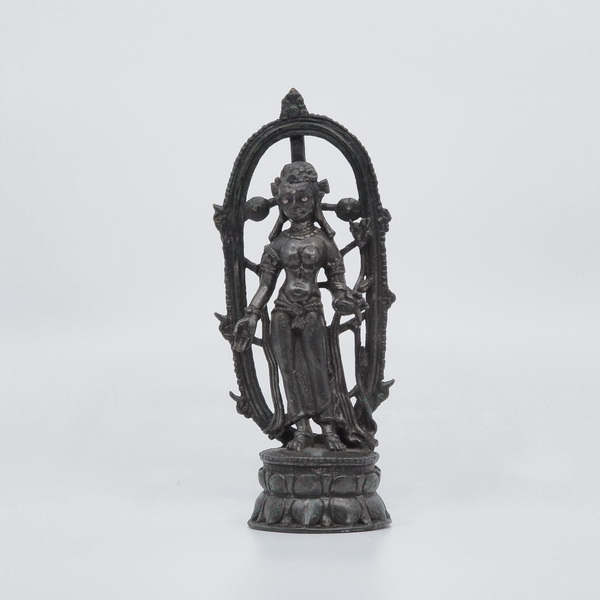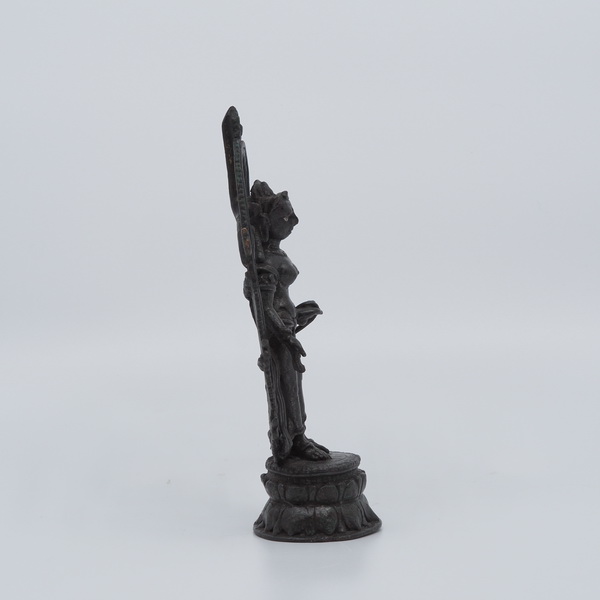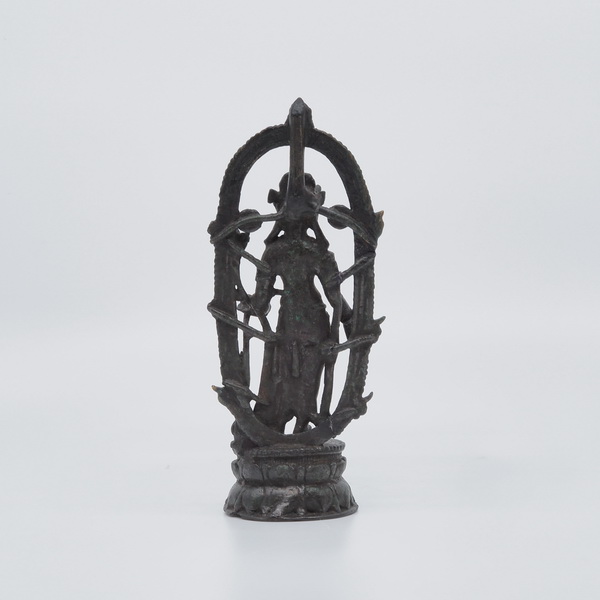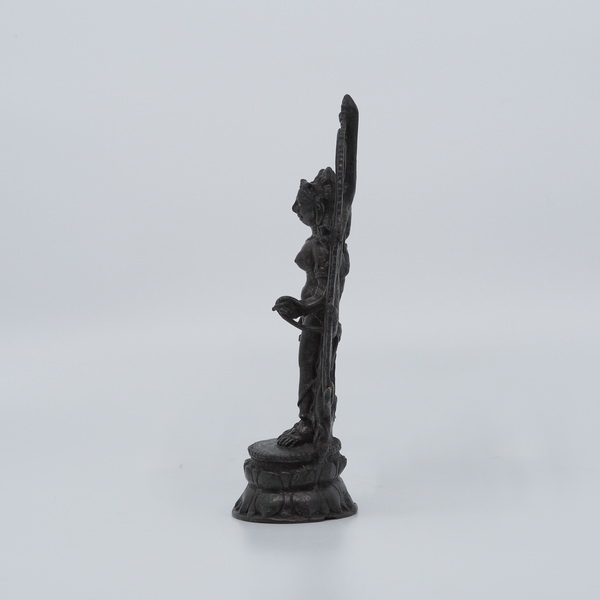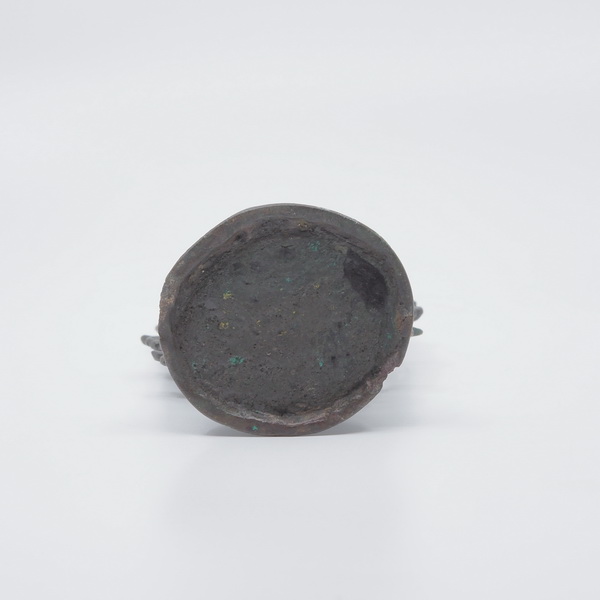ABS 379
Code: ABS 379
Country: India (north-east)
Style: Early Pala Style
Date: 750 - 850
Dimensions in cm WxHxD: 6.5 x 16 x 4.9
Materials: Brass
Standing Tara
The smiling Tara stands in a gracefully inclined attitude on a circular double lotus pedestal with a beaded upper border. Her right hand is extended in the gesture of charity (varada-mudra).
With her left hand she holds the stalk of a water lily (utpala) winding up from the pedestal and blossoming beside her left shoulder. A cloth is tied around her hips with a prominent knot in front, and the upper body appears to be naked. Tara wears a small crown, from under which two strands of her hair are falling upon her shoulders, as well as a pair of earrings, a beaded necklace, and ornaments at the upper arms, wrists and feet. The goddess is encircled by an aureole (phrabhamandala) decorated with a beaded border and leaves. Flowers are blooming into the open spaces. It is the water lily that identifies her as the Buddhist goddess Tara. Buddhist goddesses never hold a lotus (padma), because this flower is the attribute of the Hindu goddess Lakshmi, the consort of Vishnu. It is very rare to find an image of Tara rendered convincingly as a young girl as it is advised in sadhana texts.
Tara is a generic name for an originally Indian deity described in Tibetan Buddhism under 21 different forms, each with a different appearance and function, and the Green Tara (literally the “dark Tara”) is the source of all of them. The devotion for Tara was popularised in Tibet by the Indian scholar Atisha (982-1054) from Vikramashila Monastery, who taught in Tibet from 1045 until his death.
Tara is one with her mantra: OM TA RE TU TARE TURE SOHA. Lay people can call upon her for help in times of need by simply uttering her name with devotion.
She is a bodhisattva who, according to tradition, vowed to manifest as a female until all beings are liberated from samsara.
The smiling Tara stands in a gracefully inclined attitude on a circular double lotus pedestal with a beaded upper border. Her right hand is extended in the gesture of charity (varada-mudra).
With her left hand she holds the stalk of a water lily (utpala) winding up from the pedestal and blossoming beside her left shoulder. A cloth is tied around her hips with a prominent knot in front, and the upper body appears to be naked. Tara wears a small crown, from under which two strands of her hair are falling upon her shoulders, as well as a pair of earrings, a beaded necklace, and ornaments at the upper arms, wrists and feet. The goddess is encircled by an aureole (phrabhamandala) decorated with a beaded border and leaves. Flowers are blooming into the open spaces. It is the water lily that identifies her as the Buddhist goddess Tara. Buddhist goddesses never hold a lotus (padma), because this flower is the attribute of the Hindu goddess Lakshmi, the consort of Vishnu. It is very rare to find an image of Tara rendered convincingly as a young girl as it is advised in sadhana texts.
Tara is a generic name for an originally Indian deity described in Tibetan Buddhism under 21 different forms, each with a different appearance and function, and the Green Tara (literally the “dark Tara”) is the source of all of them. The devotion for Tara was popularised in Tibet by the Indian scholar Atisha (982-1054) from Vikramashila Monastery, who taught in Tibet from 1045 until his death.
Tara is one with her mantra: OM TA RE TU TARE TURE SOHA. Lay people can call upon her for help in times of need by simply uttering her name with devotion.
She is a bodhisattva who, according to tradition, vowed to manifest as a female until all beings are liberated from samsara.

